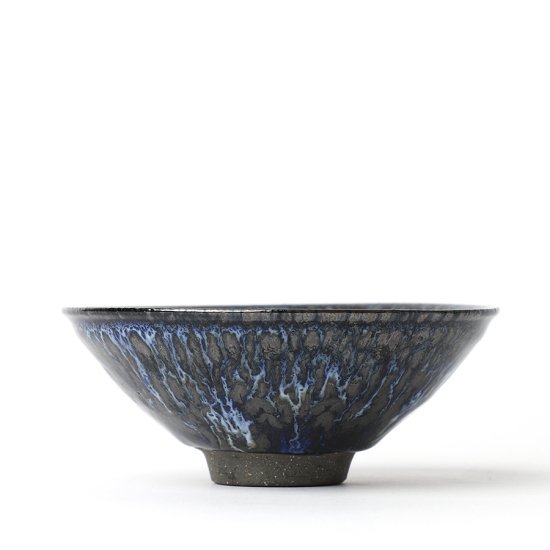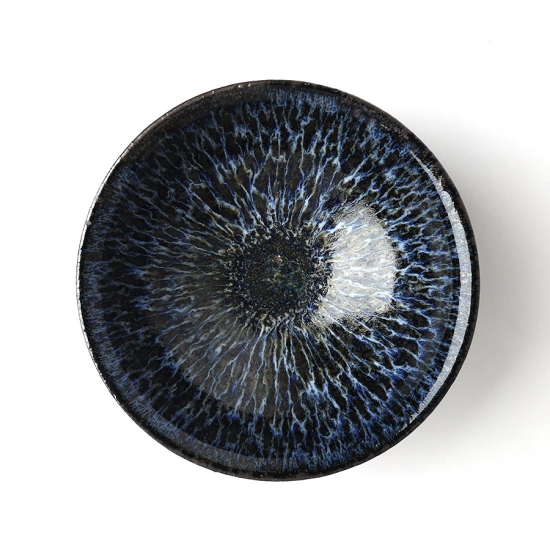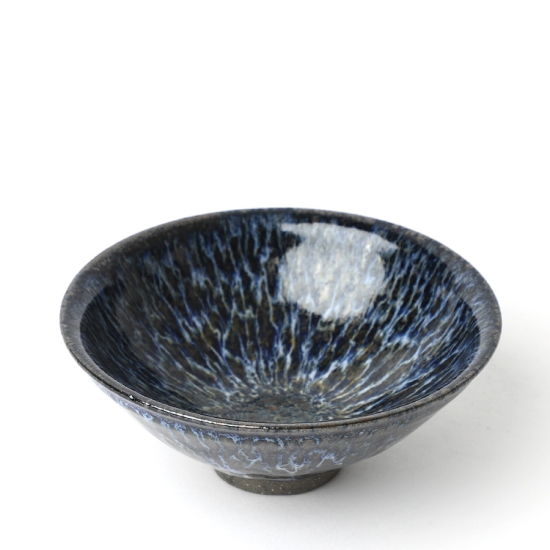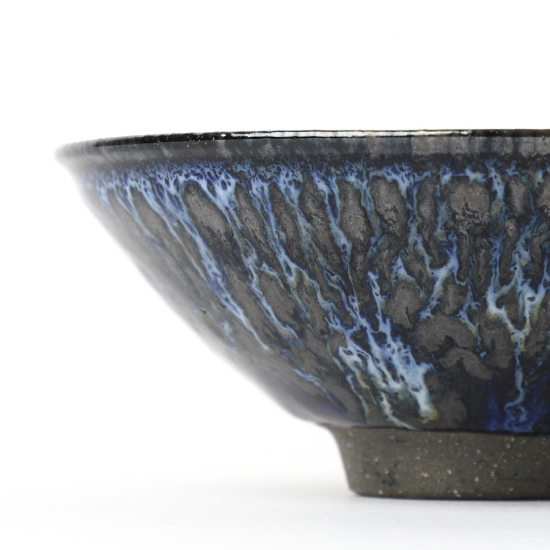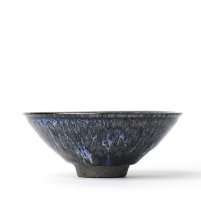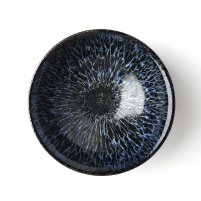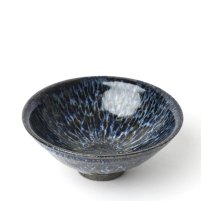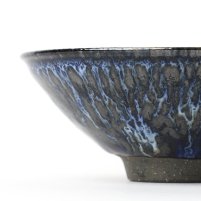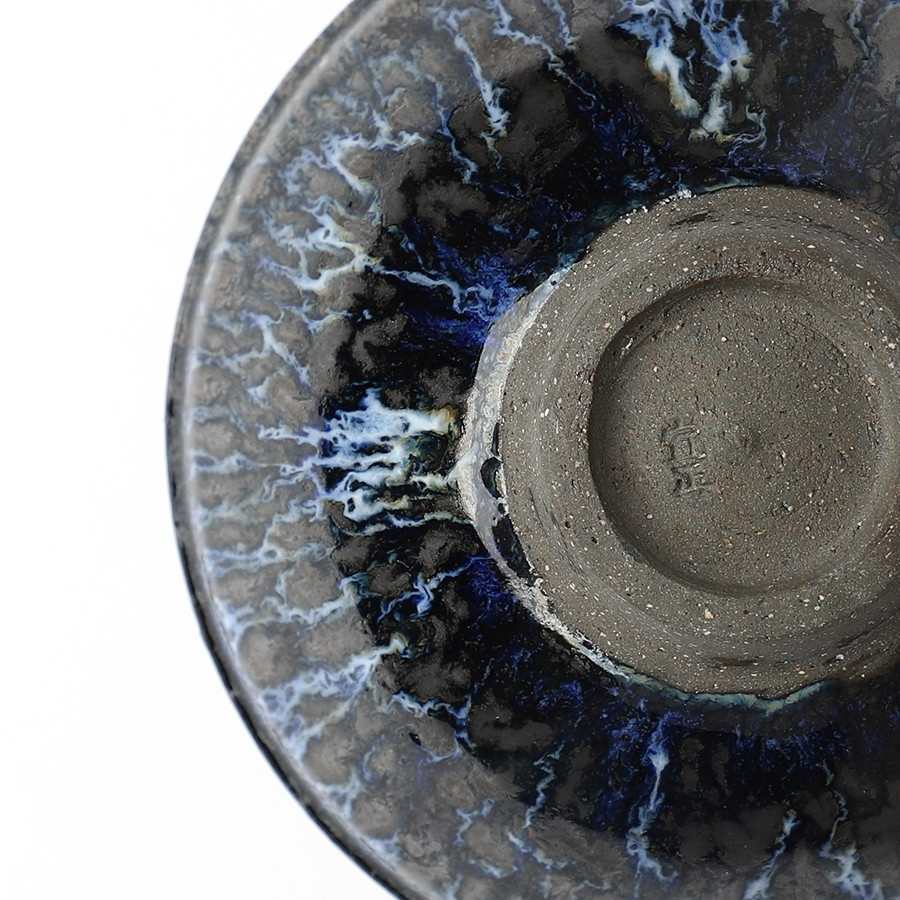Tenmoku 天目
A type of Japanese pottery and porcelain that imitates Jian stoneware from China, Tenmoku takes its name from the Tianmu Mountain temple in China where iron-glazed bowls were used for tea, a style that became popular during the Song dynasty (960-1279). These bowls are said to have been introduced to Japan during the Kamakura period (1185-1333) where they were to become highly prized in the tea ceremony. Eventually the style was also produced in Japan, notably in Seto: one of Japan’s legendary Six Ancient Kilns or Rokkoyou. Made of feldspar, limestone and iron oxide, tenmoku glazes can range in colour from black to brown, yellow and plum; the quicker a piece is cooled, the darker the resulting glaze.



